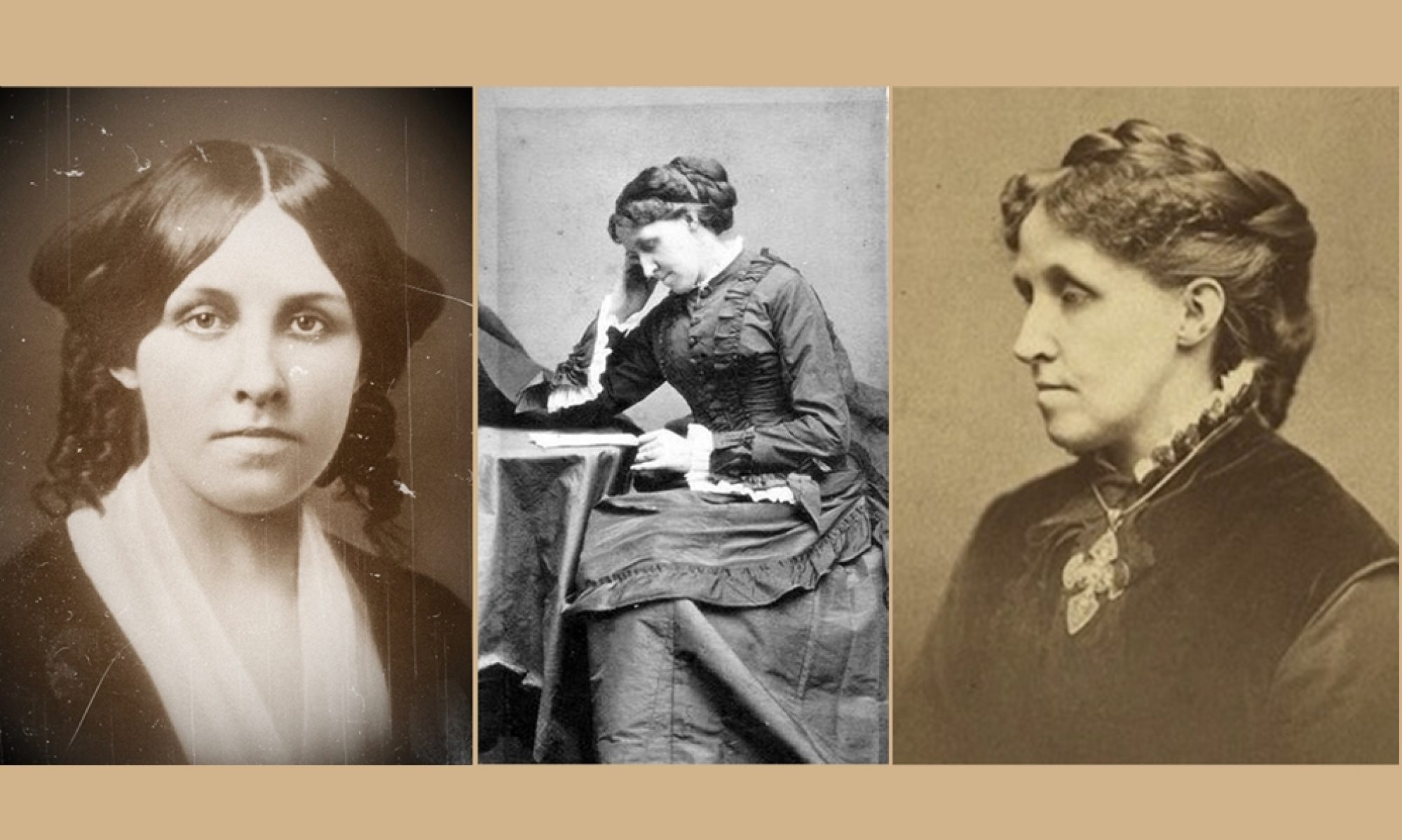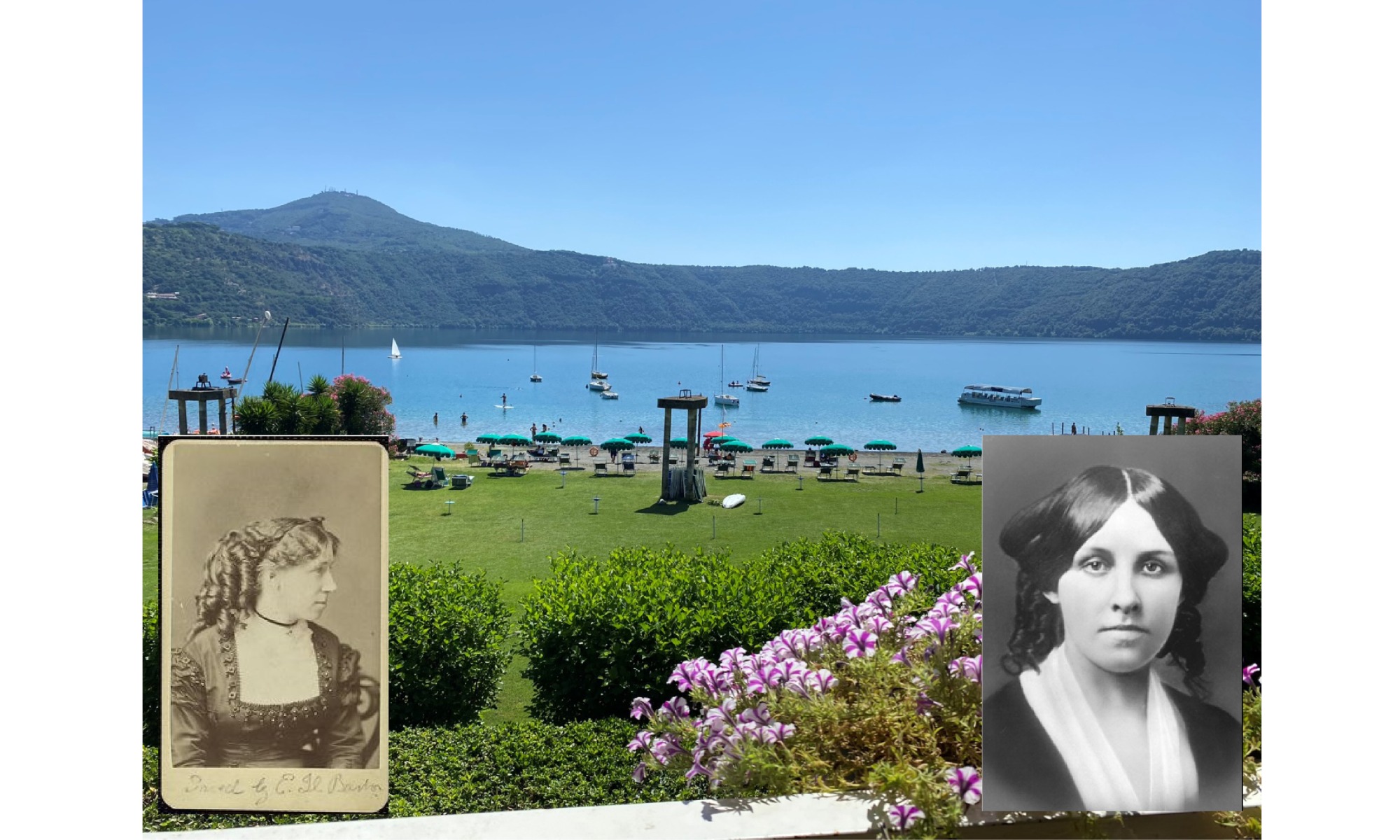Guest post by Lorraine Tosiello
In March 1871, Louisa May Alcott, her sister May, and May’s friend Alice Bartlett spent two weeks in the hill towns south of Rome. Based in Albano Laziale, the women had access to the nearby lakes of Albano and Nemi, picturesque villages such as Frascati and Grottaferrata, gardens to walk in, and holy sites to visit. Alcott spent much of her time completing her novel Little Men. May sketched and painted, and Alice saw with family vacationing in the area. Generally, they kept up with “early hours, much exercise,” while their daily society consisted “chiefly of donkeys.”[1]
I had the unforgettable pleasure of spending two days in the rolling hills south of Rome, piecing together the trails and sites the Alcotts may have traveled. In Part 1 of this photo essay, we trod over the Ariccian viaduct and found the villa belonging to a branch of the Bonaparte family, which the women visited. In this installment, we will see the natural landscapes that the Alcotts enjoyed.
Lago Albano was undoubtedly the focal point of their hikes and excursions. It is a volcanic lake, elliptical, and formed from two craters. Among the hill towns that circle the lake is Castle Gondolfo, at the time, the summer residence of the Pope. In Alcott’s time, there were no sandy beaches. The beach in the photo is the result of the lake receding.
Nemi, a small town on the shore of Lago di Nemi, seems completely unchanged from the mid-nineteenth century. An ancient inn called Lo Specchio di Diana (Diana’s Mirror, referring to the lake) is built into the lava rock, overhanging the lake. The innkeeper pulled out his frayed ledgers to see if he could find any evidence of Alcott lodging there. Alas! They go back only to 1879, but he is confident that older books may emerge. I left an Alcott acolyte determined to bring any information to light.

Though not mentioned in Shawl Straps or her journals (there are very few letters from the Alcott sisters from their time in Rome), the main historical tourist attraction in the area was the Monastery of St Nilo in Grottaferrata. John Murray’s tourist guide, which the sisters often allude to, mentions it as a stop between Frascati and Albano. This monastery retains its significance as a fortress built in the eleventh century and as the seat of a monastic sect dedicated to the Basilian, or Eastern rite, while maintaining its position in the Roman Catholic Church. Alcott was no fan of the Papist church, yet she was fascinated with young priests. (Father Ignatius in A Long Fatal Love Chase is one of my favorite characters.) Given the military appearance of the walls, the schism with the Roman rite, the young voices of the monks in the church, it seemed plausible that she spent time in this holy spot.

But did Alcott visit Grottaferrata for sure? Here’s where historian Stefano Paolucci helps us again with his investigative reporting. Alcott writes a lovely vignette of a festive day among artists, picnicking, “flirting and dancing, charades and singing.”[2] The artists arrived by carriage from Rome, “a very festive spectacle they made as they drove through the narrow streets with flowers and streamers in their hats, singing and joking …”[3] Using the dates of the travelers’ time in the Alban hills, and Alcott’s specific descriptions of the costumes worn, Paolucci asserts that the festa the artists attended was the Feast of the Annunciation, held annually in Grottaferrata. [4] According to Paolucci, the festival goers would wear beautiful paper roses and spun glass plumes in their hair and caps, corroborating Alcott’s flowers and streamers. In 1871, the festival took place on March 25th. Our travelers arrived in mid-March and left at the end of the month. William Wetmore Story, the most prominent American sculptor in Rome, wrote in Roba di Roma that on the 25th of March, “peasants from all the country villages come,” describing a scene of merriment with harlequins, saltimbanchi, booths, and braying donkeys. [5]
Alcott mentions that the picnickers gamboled in Villa Doria, a park in Albano Laziale. This classical Italian garden remains a public park, though my host, Laura Piersanti, apologized about its disheveled state. This authentic appearance likely correlated well with the actual experience of the Alcotts when they visited in the mid-nineteenth century. Louisa loved to walk, May loved to sketch, and Alice adored riding. Being in that secluded spot where the women vacationed and walking under the trees and along the paths of their leisure was a treat.
Indeed, the unchanged picturesque villages and the country vistas gave me a strong and lasting idea of the experiences of the Alcotts in the Castelli Romani.
References
Alcott, LM. Shawl Straps, Volume 2, Roberts Brothers, Boston 1872.
Paolucci, S. Louisa May Alcott ai Colli Albani, Passamonte Editore, Grottaferrata 2020.
All images are my own.
All quotes from Paolucci are translated from Italian to English by myself.
[1] Alcott, LM. Shawl Straps, Volume 2, Roberts Brothers, Boston 1872. P 177.
[2] Alcott, ibid, p.189.
[3] Alcott, ibid, p. 189.
[4] Paolucci, S. Louisa May Alcott ai Colli Albani, Passamonte Editore, Grottaferrata 2020, p. 24.
[5] Story, WW. Roba di Roma, J.D. Lippincott, 1867, p. 92.
 Are you passionate about
Are you passionate about
Louisa May Alcott too?
Subscribe to the email list and
never miss a post!
Facebook • Instagram • Twitter








 Find Susan’s books here on Amazon
Find Susan’s books here on Amazon